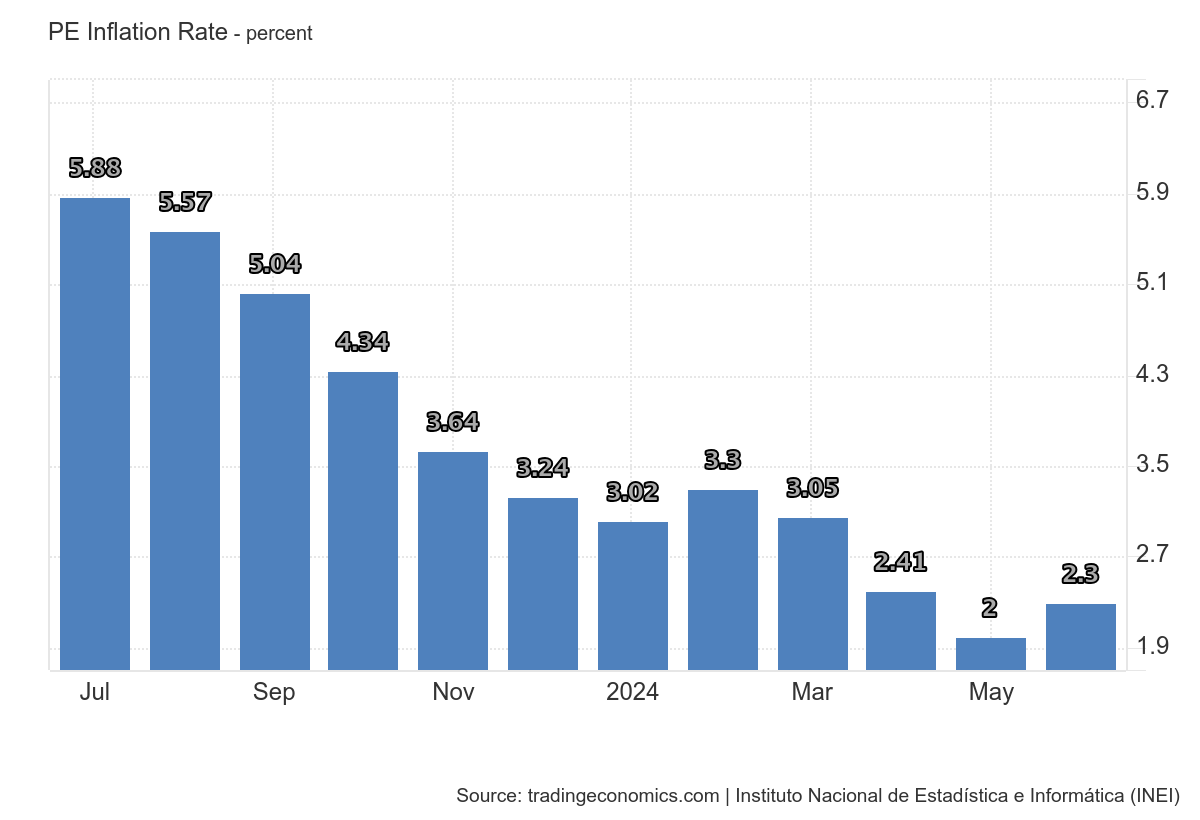Peru is stepping into the world of cryptocurrency with new regulations. This South American country, which is popular for its active economy, has over 32 million people. Peru relies heavily on exports like copper, gold, zinc, textiles and fish meal. The country trades mainly with the US, China, Brazil, and Chile. Despite being ranked 76th in the Global Innovation Index in 2023, a large part of the workforce of the country – at least 70% of the total workforce – works in informal jobs.
It was in December 2021 that Peru introduced a new draft bill to define and regulate cryptocurrency transactions for the first time. It aims to provide a clearer regulatory framework for the crypto sector. Nonetheless, the digital currencies are not backed by Peru’s major financial institutions, like the Central Reserve Bank of Peru (BCRP), the Securities Market Agency (SMV), and the Banking and Insurance and Pension Fund Manager Agency (SBS).
Would the major intuition taken with the introduction of the new crypto law result in the complete integration of digital finance into the country’s economic landscape? Only time will tell.
1. Crypto Regulation in Peru: A General Overview
In Peru, crypto assets are still a grey area. Is it illegal? It’s a complex question. Whether it is legal or illegal is not clearly defined by law. That means you can buy and trade crypto in the country. But, there do exist some restrictions. Advertising financial services tied to crypto is restricted unless you are a regulated financial institution. The Peruvian government is considering a new law to regulate crypto. Sadly, that move is currently facing some opposition. Recently, a decree made virtual asset service providers subject to anti-money laundering regulations. The degree requires these service providers to follow strict compliance measures.
2. Crypto Regulation in Peru: What’s New
February 20, 2024: Peru announced plans for an AI regulation framework. It introduced a new bill in Congress.
February 28, 2024: The Lima Stock Exchange added three bitcoin spot ETFs to diversify investment options. These ETFs include iShares Bitcoin Trust’s IBIT, Invesco Galaxy Bictoin’s BTCO and Vaneck Bitcoin Trust’s HODL.
May 2, 2024: The Council of Ministers released a draft regulation for AI promotion. The draft defines key-AI related terms. And, it highlights the potential benefits of AI.
June 7, 2024: The Central Bank of Peru partnered with India’s National Payments Corporation to create a system similar to India’s UPI. The prime aim of the move is to boost financial inclusion. It also targets to enhance payment interoperability.
3. Micro Bitcoin Economies in Peruvian Villages
In remote Peruvian villages, Bitcoin is making a significant impact on unbanked communities. Motiv, an NGO, has been at the forefront of this change since 2019. They travel to isolated regions to educate residents on using Bitcoin. Since late 2020, the NGO has established 16 Bictoin microeconomics, where Bitcoin serves as the primary currency for buying and selling goods and services. This initiative is vital in Peru, where over 50% of the population is unbanked. Most transactions in Peru are in cash, using the Peruvian sol, which has faced significant inflation. In June 2024, the annual inflation rate in Lima rose to 2.3%, driven by higher costs in transport and housing. The Consumer Price Index also saw a slight increase of 0.12% month-on-month.

4. Peru’s New Cryptocurrency Asset Law Explained
In Peru, the new crypto asset law was introduced in December 2021. The proposed law aims to define what a crypto asset is. It also attempts to outline the responsibilities of virtual asset service providers. It suggests creating a public registry for these service providers. The move will allow users to verify their legitimacy. Notably, the law requires these service providers to inform users that cryptocurrencies are not considered legal tender in the country. And, also it demands these service providers to educate users about the risk involved in dealing with crypto assets. Interestingly, the law allows companies to incorporate and hold crypto assets. The companies are permitted to treat them as inventory or intangible assets depending on their intended use. Nonetheless, the law does not recognise bitcoin as legal tender.
5. Peru Crypto Tax Framework Explained
In Peru, crypto assets are seen as a non-physical item that can be transferred or sold, like patents or copyrights.
Companies: For Peruvian companies, selling or transferring crypto is taxed as capital gains at 29.5%.
Individuals: For individuals, these transactions are not taxed unless done regularly.
VAT & FTT: Crypto transactions are not subject to VAT since they are not listed as taxable transactions. The Financial Transactions Tax (FTT) does apply because crypto is often transferred via digital wallets. However, if crypto is exchanged for cash and deposited in a local bank, FTT would apply.
6. Timeline of Crypto Regulation Evolution in Peru
2018: Peru announced PeruCoin, a virtual currency worth about $10 USD. The project stalled and was suspected to be a scam. It raised concerns about cryptocurrencies.
December 2021: A draft law was introduced to regulate cryptocurrency activities in Peru.
March 2023: The Central Reserve Bank of Peru released a report on the benefits and risks of creating a digital currency.
July 2023: The government issued a supreme decree, making crypto exchanges Virtual Asset Service Providers. PSAVs are required to report to the Financial Intelligence Unit.
Endnote
In 2024, Peru finds itself navigating uncertain waters regarding crypto regulation. While not explicitly illegal, crypto assets operate in a legal grey area in the country. The government’s push for new regulations faces challenges, despite recent decrees on anti-money laundering measures for crypto service providers. Meanwhile, initiatives like Motiv’s Bitcoin microeconomics highlight crypto’s practical impact in unbanked regions. Clarity on the crypto regulation status is very crucial if the country has plans to overcome its economic limitations using the digital economic possibilities.
Also Read : Crypto Regulations in France 2024 – An European Crypto Hub
 coinpedia.org
coinpedia.org
